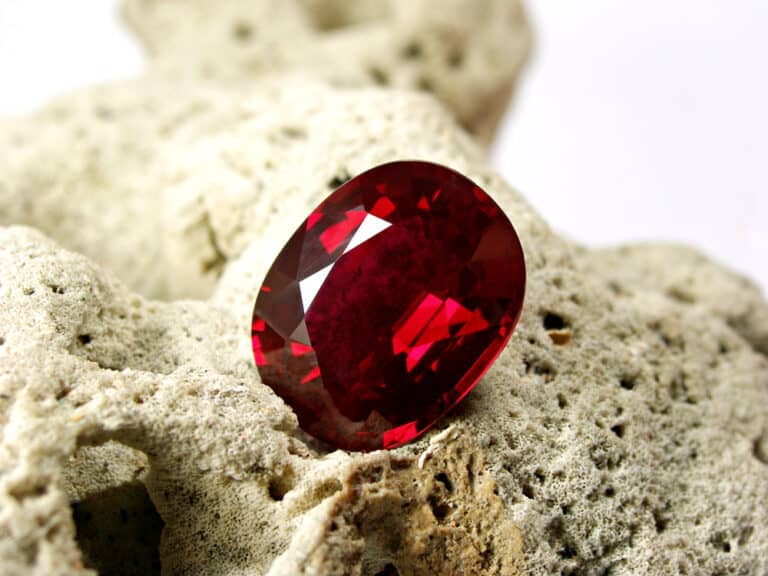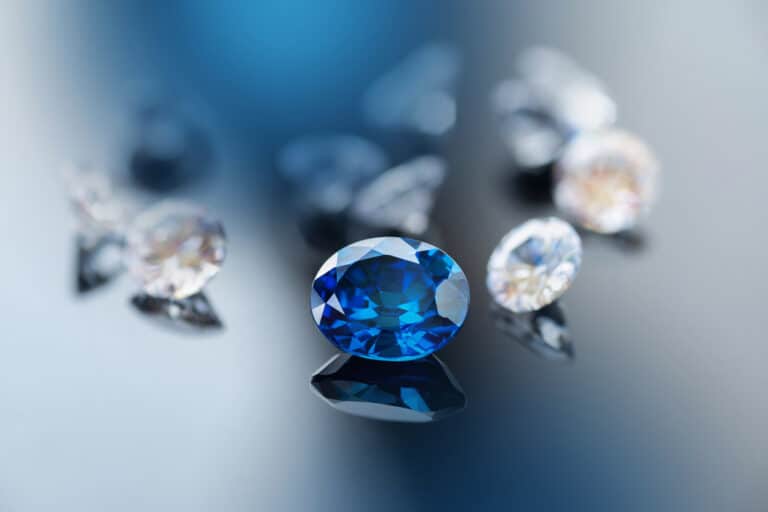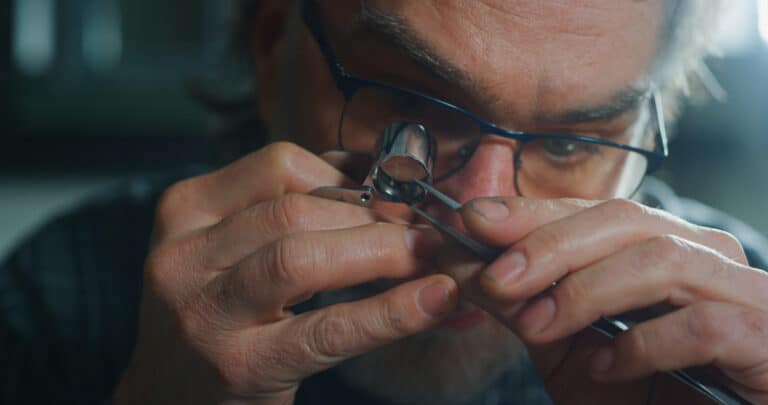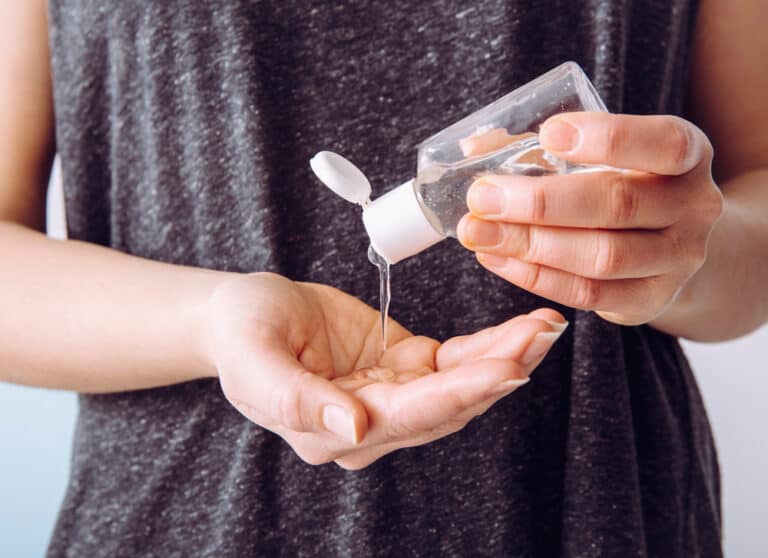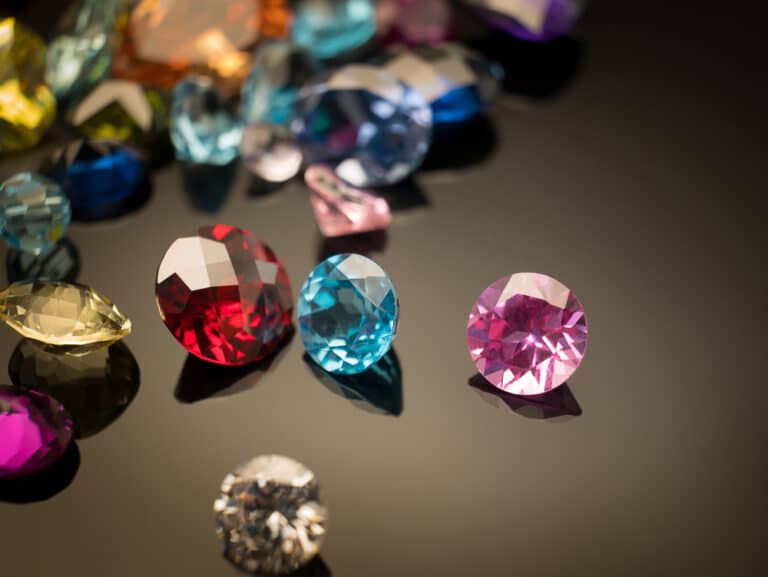Sapphires and Emeralds have a long history of being prized gemstones. Their beautiful and brilliant colors make them extremely attractive. Still, their durability can only be measured by how hard the stone is because this indicates whether the jewel will be scratch resistant and stay beautiful through the years.
The hardness of a gemstone is measured on a qualitative ordinal scale called the Mohs mineral scale of hardness. According to this scale, Sapphires are harder than emeralds, measuring 9 on the Mohs scale for hardness, compared to Emeralds, which only rate 7.5 to 8 on the scale.
But what makes a Sapphire that much harder than Emeralds, and what are the significant differences between these two stones? Read on to discover more.
Chemical Composition of Sapphires and Emeralds
Sapphires have a higher refractive index than emeralds, meaning they bend light more. This is because sapphires are made of aluminum oxide, while emeralds are made of beryllium oxide. Sapphires also have a higher specific gravity than emeralds. This means that sapphires are heavier than emeralds for a given size. Lastly, sapphires have double refraction, while emeralds do not. Double refraction is when light is bent twice when it enters a sapphire, forming two images.
Sapphires and emeralds are both beautiful gemstones used in jewelry for centuries. While they may look similar, they are actually quite different. Sapphires are harder than emeralds, which is one reason you can’t fake them.
The chemical composition of sapphires is aluminum oxide, while the chemical composition of emeralds is beryllium aluminum silicate. The difference in these two compositions is what gives sapphires their hardness. Sapphires score 9 on the Mohs scale of hardness, while emeralds score 7.5-8. This means that sapphires are much more resistant to scratches and wear and tear than emeralds.
So, if you’re looking for a durable gemstone for your jewelry, Sapphire is the way to go!
How Is Mineral Hardness Determined In Sapphires and Emeralds?
You may wonder how exactly one would determine the mineral hardness of Sapphires and Emeralds. Well, the system by which gemstones are tested was developed in 1812 by Friedrich Mohs.
This German mineralogist and geologist introduced the Mohs scale of mineral hardness, a qualitative ordinal scale used to measure the scratch resistance of minerals. The scale measures a harder substance’s ability to damage a softer material’s surface.
The scale of measurement is Mohs, with softer minerals measuring 1 Moh and the hardest substance rating 10. So, where would Sapphires rank on the Mohs scale compared to other precious stones?
- Diamonds: 10
- Rubies: 9
- Sapphires: 9
- Emeralds: 7.5 to 8
- Tanzanite: 6 to 7
How Do Sapphires And Emeralds Compare?
Sapphires and emeralds are both beautiful, precious gemstones that have been treasured for centuries. But how do you choose between these two popular gems?
For starters, sapphires are much harder than emeralds. This means that sapphires are more resistant to scratches and wear and tear and will retain their lustrous color for longer. Sapphires are also more expensive than emeralds due to their superior hardness and durability.
On the other hand, Emeralds are softer than sapphires and thus more susceptible to damage. However, emeralds are also rarer than sapphires, which makes them more valuable in the eyes of many collectors.
So, which gem is right for you? Sapphire is a good choice if you’re looking for a beautiful stone that will stand the test of time. An emerald may be better if you sacrifice some durability for rarity.

Do The Different Colors of Sapphires Affect Their Hardness?
Emeralds and Sapphires exist in various colors, but this does not affect their hardness. For instance, Sapphires and Rubies are both made of Corundum with only slightly different chemical compositions. The main difference between Rubies and Sapphires is their colors.
Sapphires exist in a wide range of colors, including:
• Blue – the higher the concentration of iron and titanium trace elements, the more intense the blue color.
• Pink- the presence of Chromium gives this stone its pink color. It will not be considered a Ruby if the concentration of Chromium is too low, which provides it with a pink color and not a brilliant, deep red.
• Yellow- this colored SapphireSapphire has gained popularity in engagement rings since the 2000s
• Green- the shades of a green emerald range from mint to dark forest green. They are often selected as an alternative to an Emerald.
• White- White Sapphires are among the rarest and very sought after.
• Black- the unique color of this gem comes from various inclusions in its structure that prevent light from refracting from the stone. It is not truly black. Generally, this stone is not very valuable unless it has an asterism, a star-like inclusion.
• Purple- these are sought-after gemstones, but they are often mistaken for Oriental Amethysts.
What Factors Affect the Hardness Of Emeralds
The mineral composition of Emeralds is very closely related to that of Beryl. Emeralds are merely a type of Beryl. What differentiates an Emerald from other varieties of Beryl is its color.
Most varieties of Beryl will measure 7.5 to 8 Mohs. Several factors, including the gem’s mineral composition and structural flaws, affect a stone’s hardness.
Emeralds range from green to bluish-green, but the most desirable color for an Emerald is bluish-green to pure green.
Different types of Beryl include:
- Aquamarine
- Emerald
- Golden Beryl
- Goshenite
- Morganite
- Red Beryl
Hardness Of Sapphires and Emeralds And Their Price
Many different factors come into play when jewels get evaluated. Generally, each jewel is assessed to determine the quality of its Color, Cut, Carat, and Clarity (commonly known as the 4 C’s).
However, the rarity and market demand for the jewel also comes into play when a price is being evaluated. The higher the hardness of a gemstone, the higher price it can fetch on the market. This is because the stone will not scratch easily, making quality jewelry easier without fear that the stone might crack.
Conclusion
In conclusion, sapphires and emeralds are two of the most valuable gemstones on the market. However, due to their hardness levels, they can’t be faked or manipulated easily. As a result, sapphires have become more desirable and expensive than emeralds in recent years because of their authenticity and durability. Knowing what makes each stone unique will help you select the right one for your jewelry collection.


